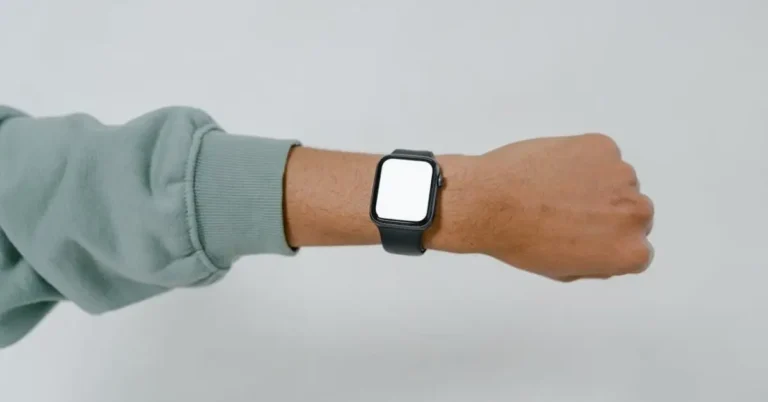Although horse racing looks the same as it was 50 years ago, the entire industry is changed thanks to technology. Yes, nowadays, we have smart wearable tech that is specifically designed for horses.
These wearable gadgets have different purposes. Some are used as data collection devices, measuring different things like heart rate, speed, acceleration, stride length, and other things, but some even use artificial technology to scan the horse’s body and movements and predict the likelihood of the horse suffering from an injury.
So, the age-old sport that we used to think was far from advanced is moving to the 21st century very fast. The technology is mainly designed to make the sport more ethical, which was a problem in the modern world.
These devices have a goal to minimize equine injuries and fatalities but also give people more information on these horses so they can understand them better.
This got us thinking, what are some of the best wearable devices for horses on the market? Let’s find out.
What’s This Tech All About?
As we mentioned before, these wearable devices like StrideSAFE, Equisense, and VetCheq are strapped to horses in different ways (saddlecloths, girths or leg boots), and they can track everything from heart rate to stride length.
It is like smartwatches but only for horses, and some of this tech is even more capable than your Apple watch you wear every day. So, instead of counting steps, these devices measure gallops and spot the horse’s actual state, which is really important for trainers.
They use sensors like accelerometers, GPS, heart rate monitors, and even AI to beam data to apps, giving people real-time insights.
Back in the olden days, trainers had to rely on their special gut feeling and a stopwatch, but those days are gone. Now, horse racing has a more calculated approach.
The only strange thing is that despite all the data we have, we still cannot breed and train a horse that will outrun Secretariat’s time on the Kentucky Derby. Shouldn’t we be capable of squeezing every bit of performance from a horse with this tech? The good thing is that the equine fatality rate has gone down thanks to such technology.
Heart Rate Monitors
Obviously, one of the most used devices on horses is heart rate monitors. Wearable tech like the Enduro Equine Heart Rate Monitor or Seaver’s connected sleeve tracks heart rate in real time, showing how hard the horse is working and when it is a good idea to pull the brakes and rest.
Did you know that the normal resting heart rate of a horse is from 25-40, but when they run at full speed, their heart rate goes to 200-plus?
So, by observing these numbers, trainers know when the horse is stressed, overworked, and even dehydrated.
Take Keeneland, a top U.S. racetrack. They’re using StrideSAFE sensors, which include heart rate data, to build health profiles for every horse. In 2024, they caught early signs of fatigue in a young colt during a workout, tweaking his training to avoid a breakdown. That’s not just smart—it’s lifesaving.
Stride Analysis
If heart rate’s the pulse of performance, stride’s the dance. Devices like the Estride tracker or Alogo Move Pro use motion sensors to analyze a horse’s gait—how it moves, how balanced it is, and whether it’s favoring a leg.
StrideSAFE, for example, predicted 90% of race-day injuries in U.S. trials by spotting tiny gait changes, like a horse compensating for pain. It’s like having a hawk-eyed physio who never blinks.
At Churchill Downs, trainers used StrideSAFE to notice a filly’s stride was off during a prep race.
Imagine if this data were publicly available, which could happen in the future. This data can be very helpful for bettors who would like to make a winning bet based on analytics. If you are interested in making a horse bet, make sure to claim your sign-up bonus before you pick your winner on the link below: twinspires.com/200-signup/
Stress and Recovery
Horses aren’t exactly chatting about their feelings over hay, but wearables like Horsepal or SeeHorse can spill the beans. These devices track stress indicators—heart rate variability (HRV), sweat levels, and even sleep patterns.
Low HRV might mean a horse is stressed or not recovering well, which is a red flag for overtraining. SeeHorse even sends alerts if a horse’s vitals go wonky, like an email from your horse saying: “I’m not feeling it today.”
A British trainer I read about uses Equisense to monitor a sprinter’s recovery after races. The app showed the horse’s HRV was tanking post-race, hinting at too much travel.
They cut back on cross-country trips, and boom—the horse nabbed a Group 3 win. It’s like giving horses a spa day, but with data instead of cucumber slices. This tech also helps during recovery from injuries or surgeries, tracking vitals to ensure a horse is healing without needing constant vet pokes.
Safety First
Racing has got a spotlight on safety, and wearables are stepping up. StrideSAFE’s machine-learning algorithms flag risks like musculoskeletal injuries before they become catastrophic, letting vets pull a horse from a race if needed.
VetCheq, with its leg-mounted sensors, monitors pulse and blood pressure so accurately it rivals medical-grade gear, catching issues during transport or quarantine. It’s like having a paramedic riding shotgun—or, well, saddle-side.
At Australia’s Flemington, trainers used Arioneo’s Orscana sensor to tweak rugging after it showed horses were sweating too much under heavy blankets, reducing stress and dehydration risks.
This technology is changing the equine industry as we speak, and it is really nice to have gadgets that will help us keep horses healthy at all times.

